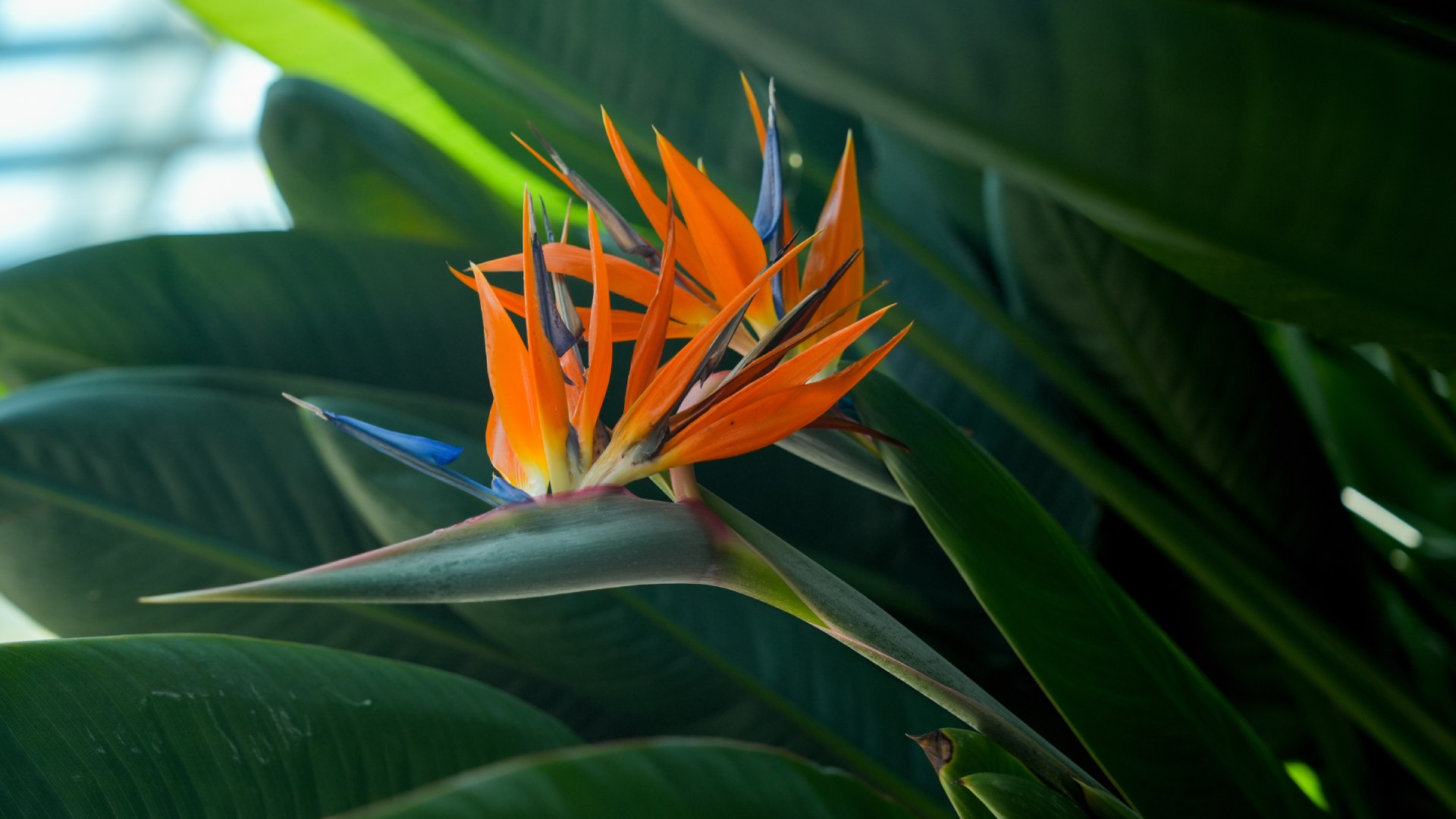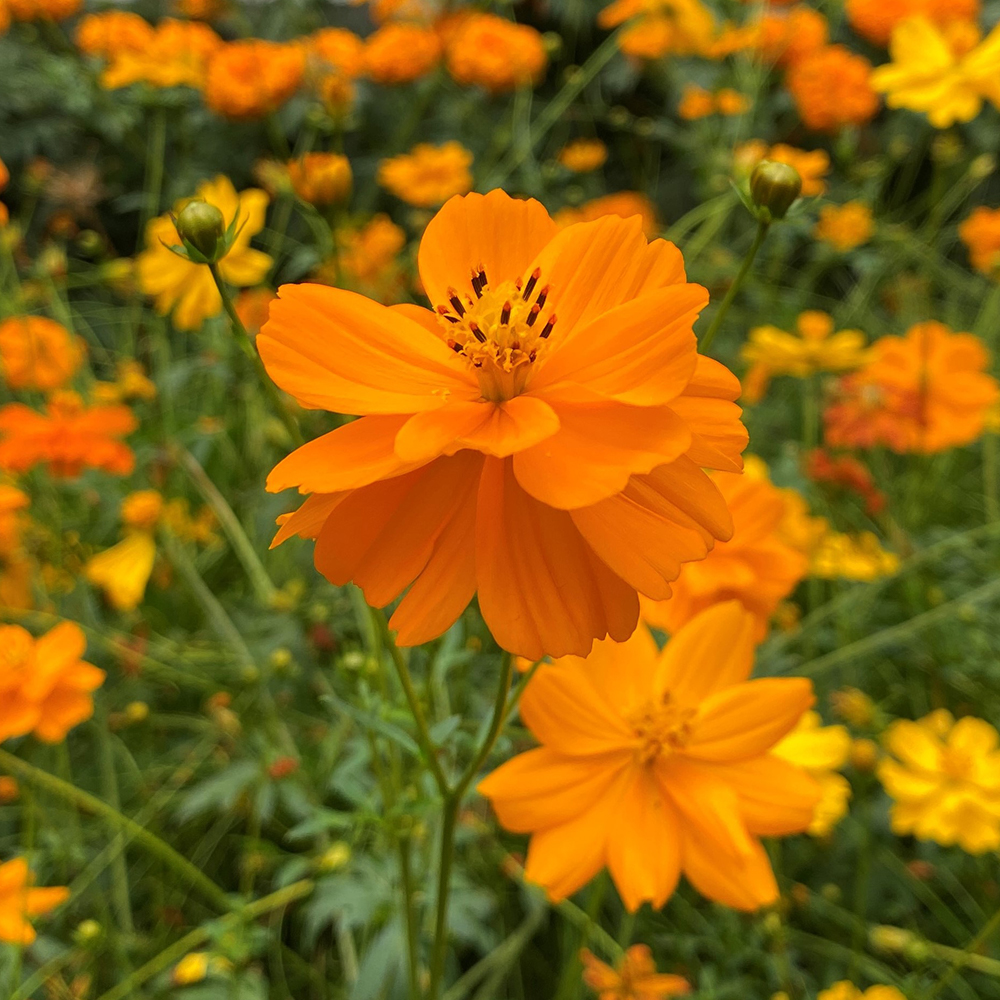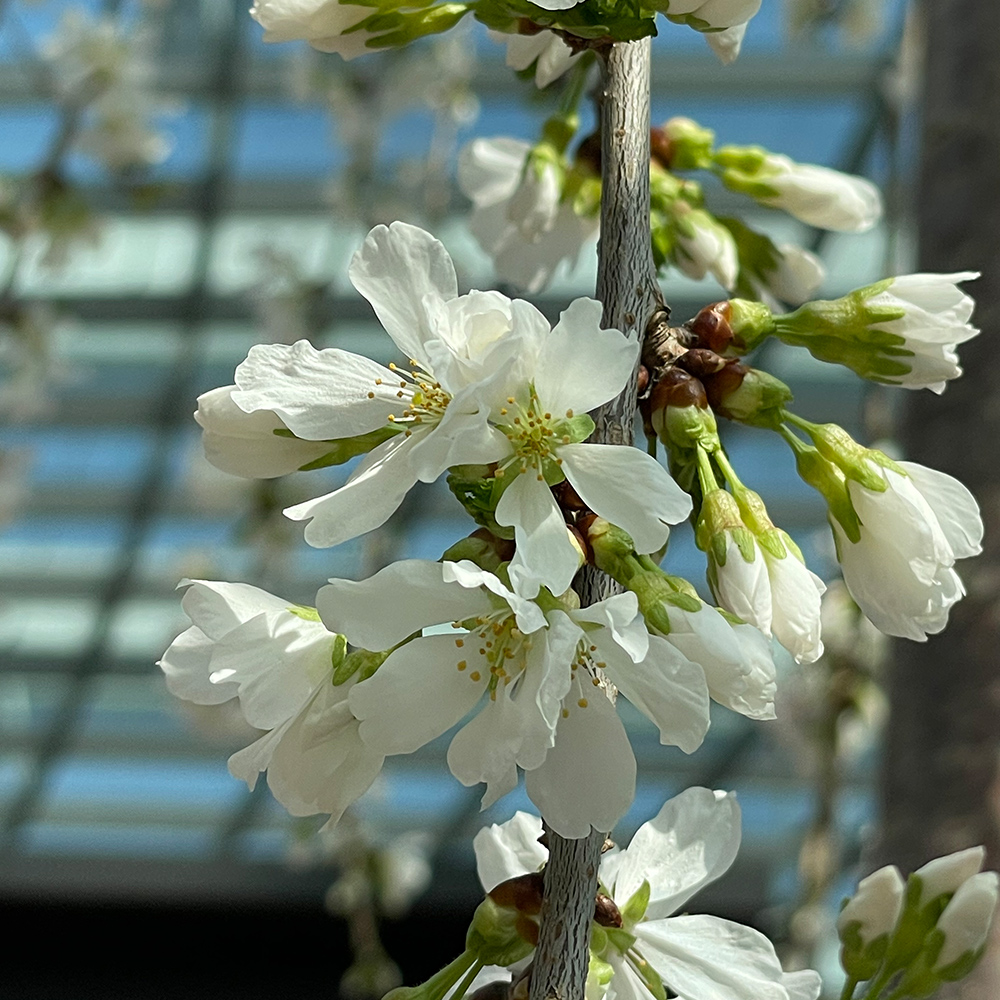Tuberous Begonia (Begonia x tuberhybrida)
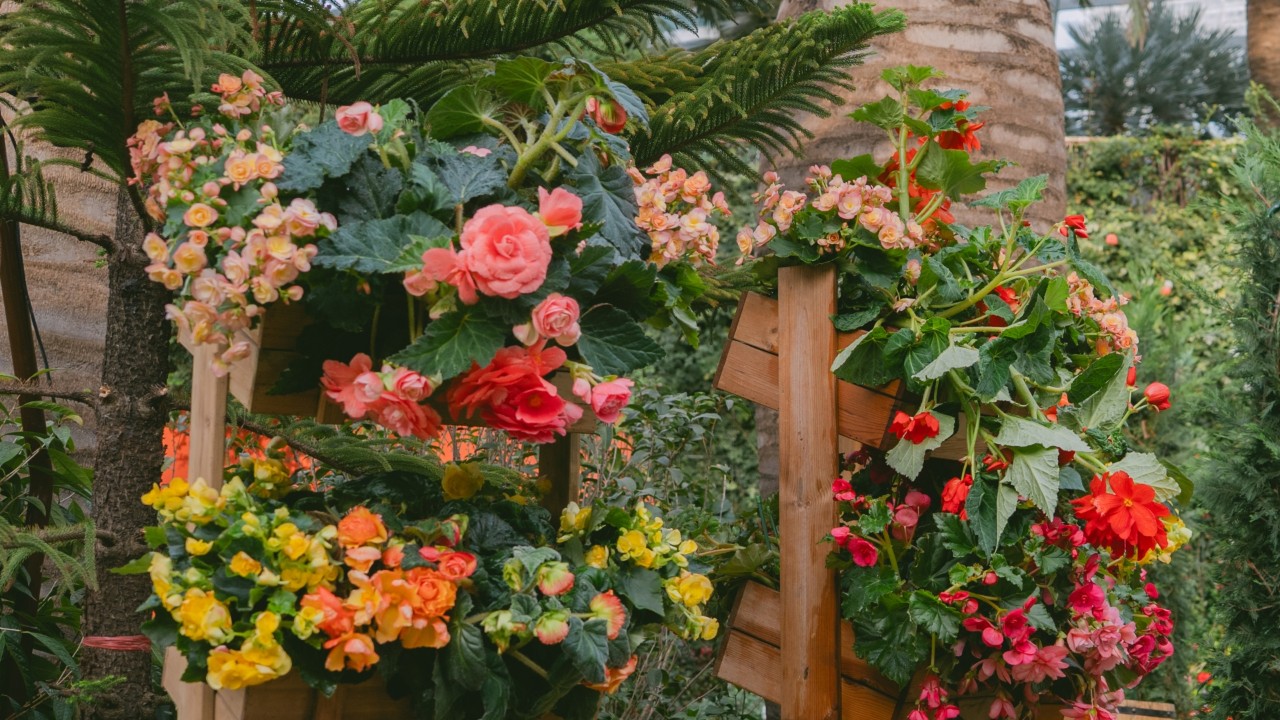 Begonia x tuberhybrida cultivars on display. Look at their large flowers cascading down!
Begonia x tuberhybrida cultivars on display. Look at their large flowers cascading down!
Consisting of over 2150 species and over a thousand hybrids, the Begonia genus represents a diverse group of species known for their stunning foliage and flowers. The different types of begonias are often grouped by their root types – such as fibrous, rhizomatous, and tuberous roots. What we have on display now are Begonia x tuberhybrida, a hybrid class of tuberous begonia grown for their large, showy blooms: the largest flowers of the Begoniaceae family.
Dazzling with many colours and charms, the hybrid tuberous begonias (Begonia x tuberhybrida) form a horticultural group of complex, cool-growing tuberous begonia cultivars with roots that go back to the Andes Mountain range in South America. As their ancestral species are native to high mountain environments, these resilient plants have adapted to their cold climate over time by evolving tubers, swollen underground stems which help to store starches so the plants can go dormant during the winter and sprout again when the season is warmer. A striking example of plant evolution indeed!
 Female (centre left, with visible yellow stigmas) and male (centre right, with many petal-like tepals) flowers of a tuberous hybrid begonia cultivar, side by side, on the same plant.
Female (centre left, with visible yellow stigmas) and male (centre right, with many petal-like tepals) flowers of a tuberous hybrid begonia cultivar, side by side, on the same plant.
The very first tuberous begonia hybrid was created in the 1870s, by crossbreeding tuberous begonia species Begonia boliviensis and another Andean tuberous species that may be Begonia veitchii. The flowers of Begonia x tuberhybrida are notable for their wide range of colours such as red, pink, white, yellow, and orange. They also come in many forms, with some appearing as single, double, or ruffled blooms! Being monoecious like most begonias, they have both male and female flowers on the same plant. Just like how male birds often boast the most colourful plumage, the male flowers of double-flowered tuberous hybrid begonia cultivars are the showiest, with abundant tepals (identical looking petals and sepals) and double petaled-form, as some or all of their stamens have been converted into tepals. In contrast, the female flowers are simpler, arranged at the sides of the male flowers, with two to five tepals and visible, yellow, lobed stigmas.
In commercial cultivation, female flowers are often removed to encourage the development of larger, showier male blooms. The practice is common for exhibition plants or retail displays, as it helps to divert the plant’s energy from seed production into enlarging the central male flower. The flowers can grow up to 15 cm across!
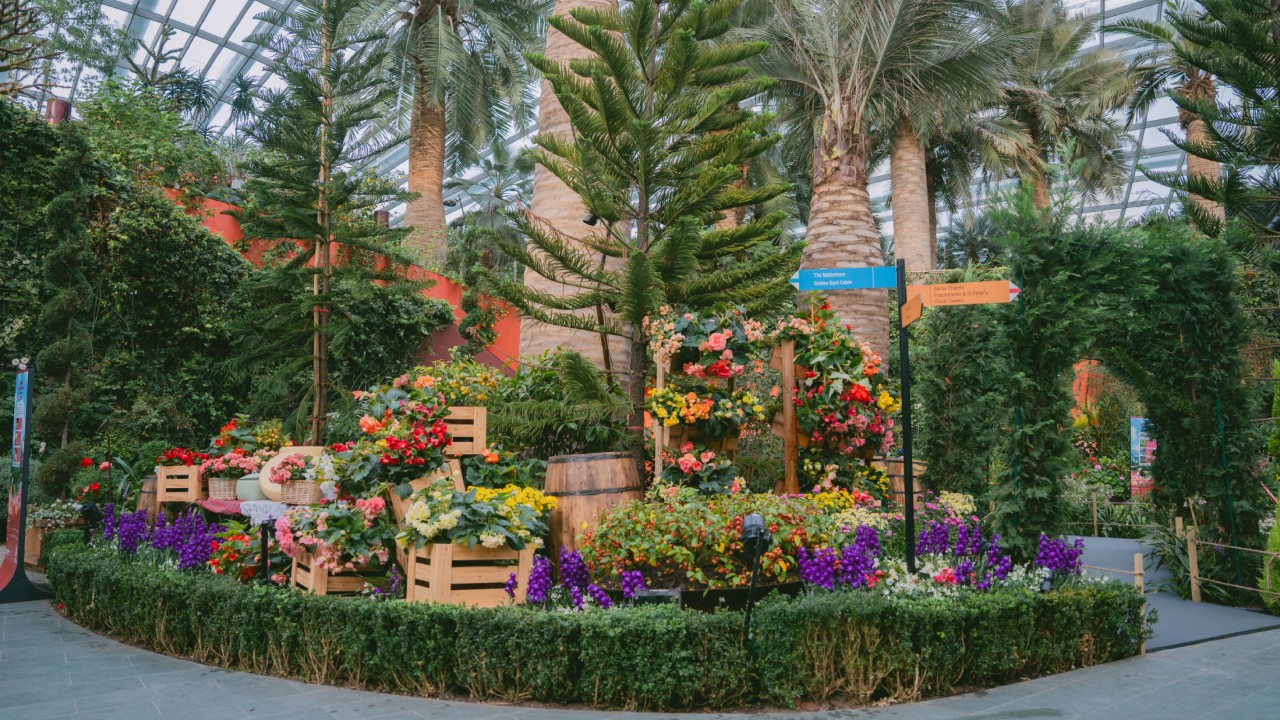 Spot the begonias displayed in the wooden crates cascading down! Aren’t they pretty?
Spot the begonias displayed in the wooden crates cascading down! Aren’t they pretty?
Some cultivars produce upright flowers above the foliage, and some produce flowers that hang in clusters from long, pendulous stems, making it perfect for hanging baskets. In our display, you will mostly find cascading begonias spilling over elevated planter boxes and fountains, which best showcases their large, showy blooms on frothy foliage. Come and check out these Begonia x tuberhybrida cultivars grown lovingly by our horticulturists, and dive into an Alpine Adventure!
Want to see, smell, and touch our begonia flowers and plants yourselves? Come visit our three Sensory Moments stations this Saturday, 13 September 2025, from 2pm to 5pm in Flower Dome! Click here to learn more.
Written by: Ng Yu Qin, Senior Horticulturist, Research and Horticulture
Yu Qin is always looking for ways to pick up new skills and put them to use. She spends most of her time with orchids and enjoys learning something new about them every day!
